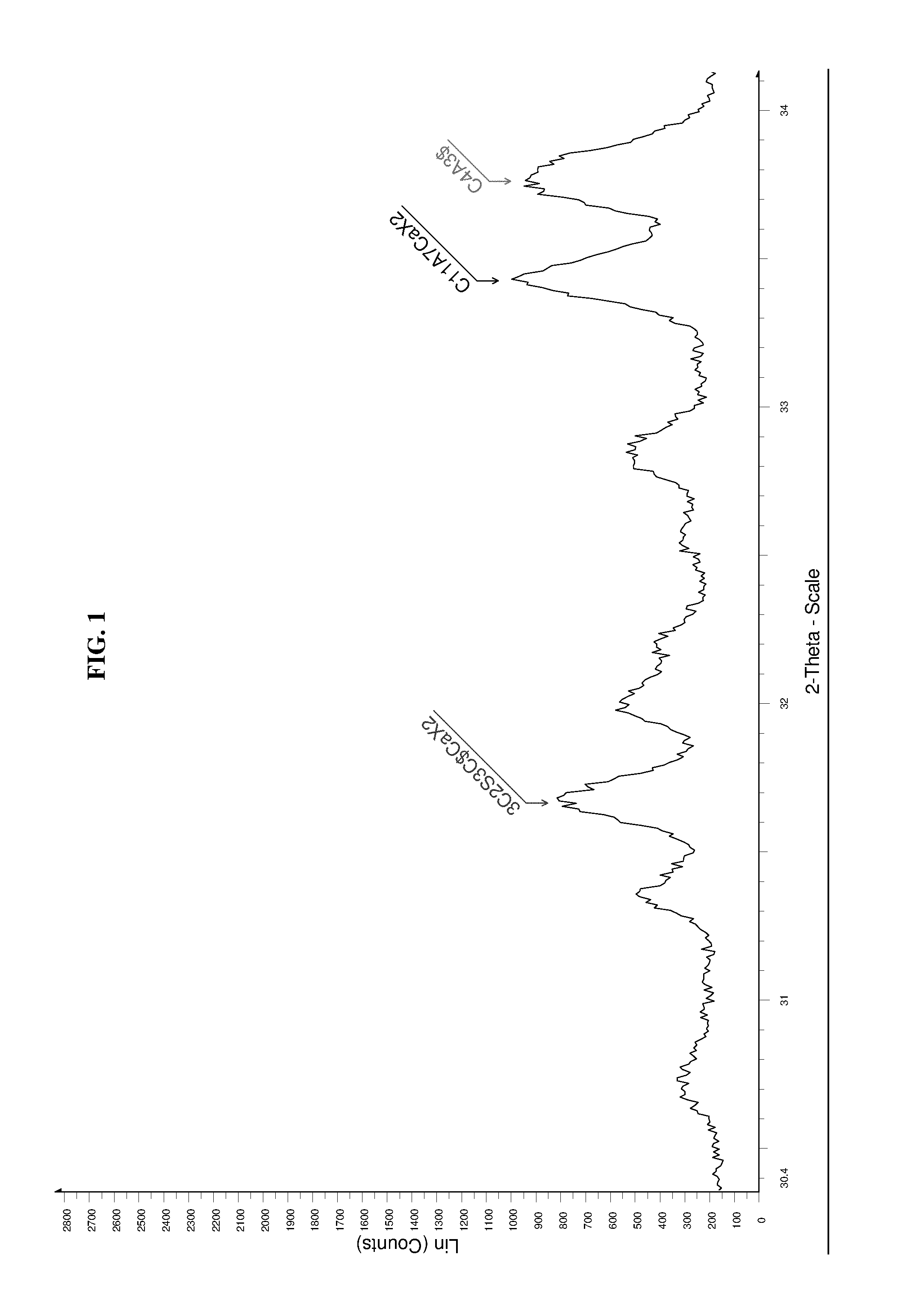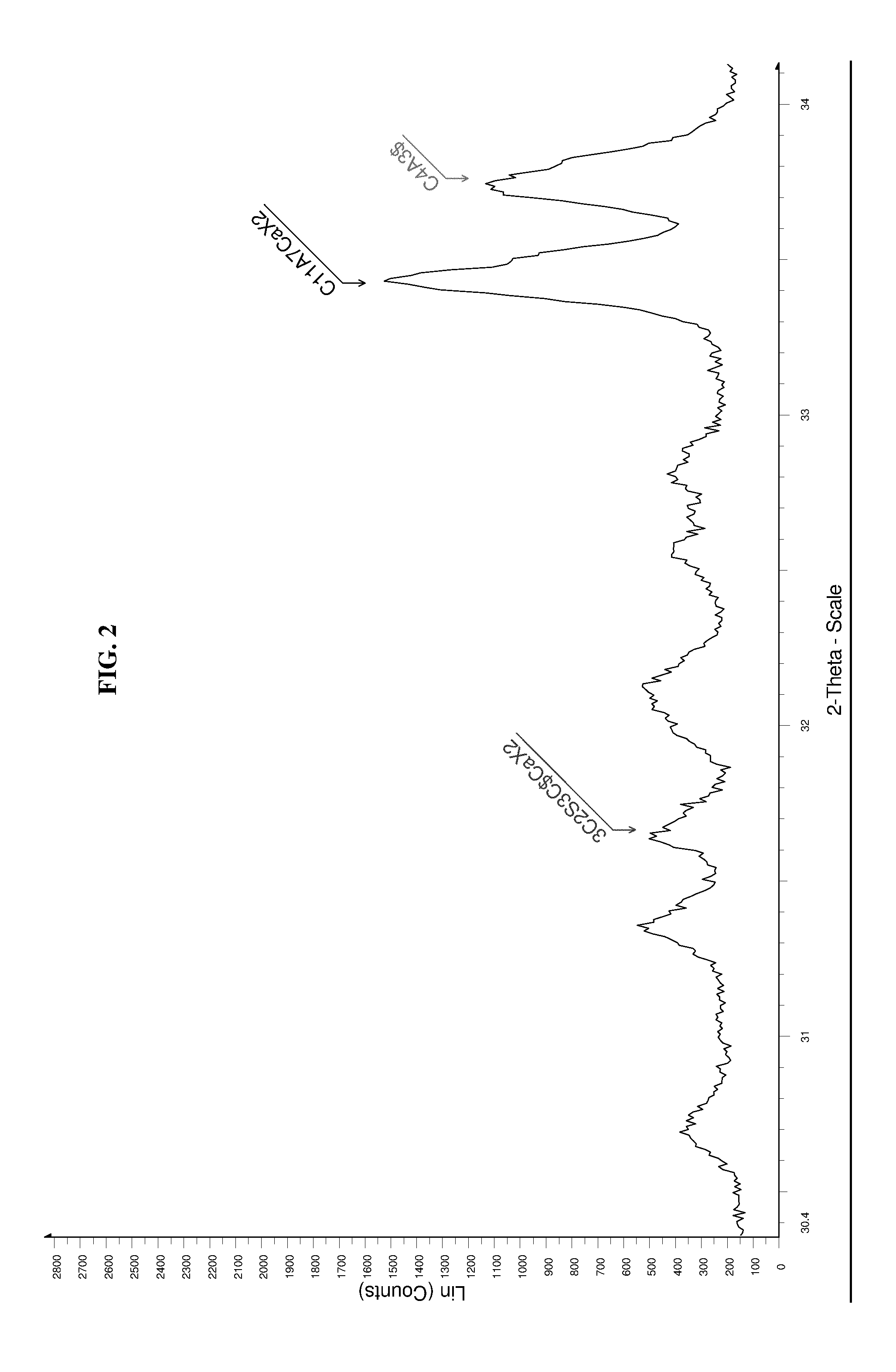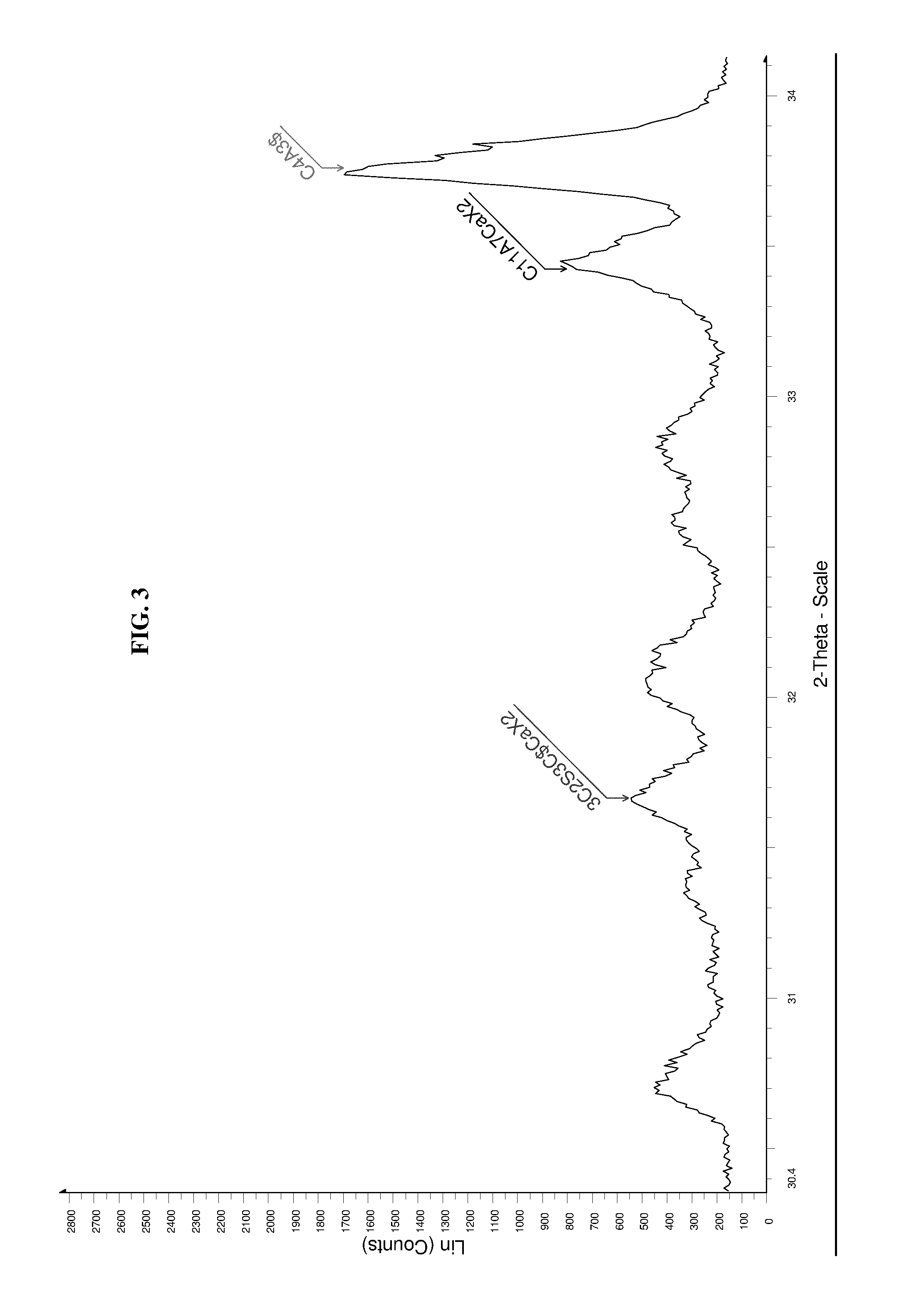High performance sulfo-aluminous clinker
a clinker and sulfoalumina technology, applied in the field of high-performance sulfoalumina clinkers, can solve the problems of limited performance, complete clogging, and difficult production of clinkers in conventional rotary furnaces
- Summary
- Abstract
- Description
- Claims
- Application Information
AI Technical Summary
Benefits of technology
Problems solved by technology
Method used
Image
Examples
example 1
Analytic Techniques for Characterization of the Sulfo-Aluminous Clinker According to the Invention
[0089]The sulfo-aluminous clinkers produced according to the invention were characterized through X-ray Fluorescence Spectroscopy (XRF), X-ray Diffraction (XRD) and Scanning Electron Microscopy (SEM) analysis. XRF analysis allows identification of the chemical elements constituting a material and of the main oxides.
[0090]The quantity of CL ions and F ions were also determined chemically.
[0091]The stabilized phases during the firing process, responsible for the performances of the clinker, require specific characterization. This characterization is obtained through X-ray diffractometry (XRD) analysis of powders.
[0092]The samples were subjected to XRD analysis using a conventional diffractometer with Bragg-Brentano geometry.
[0093]The diffraction spectra were collected in the range from 5° to 70° of 2-Theta (copper radiation) with a scanning step of 0.01 and count times of 2s for each step...
example 2
Preparation of a Sulfo-Aluminous Clinker According to the Invention
[0102]To prepare a sulfo-aluminous clinker according to the invention, a mixture of limestone, silica, natural gypsum and alumina, this latter coming from the production cycle of secondary aluminium, was used as starting material.
[0103]The chemical composition of the starting materials is indicated in Table 3:
[0104]
TABLE 3LimestoneGypsumSilica AluminaLoss on %41.5319.90.3815.64ignitionSiO2 %1.564.2595.046.20Al2O3 %3.951.951.9163.39Fe2O3 %0.280.560.501.56CaO %51.2828.000.111.85MgO %0.683.037.38SO3 %39.20.170.14Na2O %0.1801.29K2O %0.100.571.140.81SrO %NdNdMn2O3 %Nd0.05NdP2O5 %0.12Nd0.04NdTiO2 %0.13Nd0.55NdCl— %NdNdNd0.36F— % NdNdNd0.95Nd = not determined
[0105]Limestone, silica, natural gypsum and alumina were ground so that they could pass completely through a 90 micron sieve. The starting mixture was obtained by mixing the components, weighed in the proportions indicated in Table 4, with water to obtain a fluid mortar...
example 3
Preparation of a Comparison Sulfo-Aluminous Clinker
[0116]To prepare the comparison sulfo-aluminous clinker, a mixture of limestone, silica and gypsum as described in example 2, but without alumina, was used as starting material. High grade calcined bauxite was used as source of Al2O3. The chemical composition of the bauxite used is indicated in Table 8.
[0117]
TABLE 8Loss on ignition %0.67SiO2 %4.96Al2O3 %87.79Fe2O3 %1.44CaO%0.67MgO %0.12SO3 %0.01Na2O %0.12K2O %0.52SrO %0.00Mn2O3 %0.00P2O5 %0.00TiO2 %0.00Cl— %0.00F— %0.00
[0118]The starting mixture was prepared as described in Example 1, weighing the raw materials in the proportions indicated in Table 9:
[0119]
TABLE 9Limestone %44.9Gypsum %27.7Silica %1.7Bauxite %25.7
[0120]The preparation process was the following: pre-calcination stage at 950° C. for 45 minutes, firing stage up to 1330° C. for 2 hours and maintenance of this temperature for 1 hour.
[0121]The clinker thus produced was characterized as described in example 1.
[0122]The min...
PUM
| Property | Measurement | Unit |
|---|---|---|
| temperature | aaaaa | aaaaa |
| temperature | aaaaa | aaaaa |
| temperature | aaaaa | aaaaa |
Abstract
Description
Claims
Application Information
 Login to View More
Login to View More - R&D
- Intellectual Property
- Life Sciences
- Materials
- Tech Scout
- Unparalleled Data Quality
- Higher Quality Content
- 60% Fewer Hallucinations
Browse by: Latest US Patents, China's latest patents, Technical Efficacy Thesaurus, Application Domain, Technology Topic, Popular Technical Reports.
© 2025 PatSnap. All rights reserved.Legal|Privacy policy|Modern Slavery Act Transparency Statement|Sitemap|About US| Contact US: help@patsnap.com



